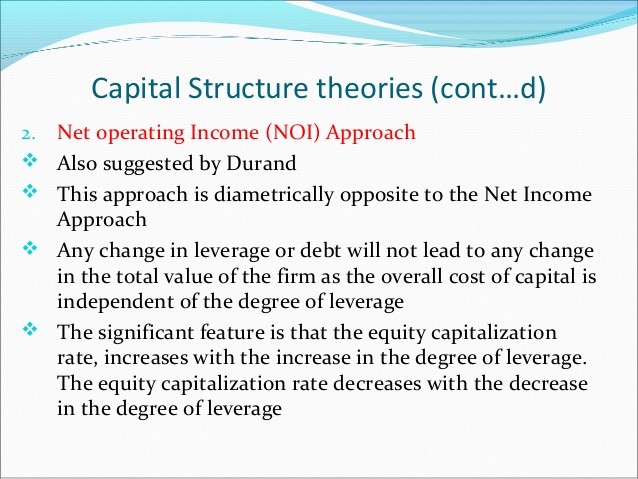Contents:

When making choices or judgments, we often use psychological shortcuts or “rules of thumb” identified asheuristics. For each choice, we do not at all times have the time or resources to compare all the information before we make a selection, so we use heuristics to help us attain selections shortly and efficiently. Sometimes these psychological shortcuts could be helpful, however in other instances, they will result in errors orcognitive biases.


Moreover, the longer you stay preoccupied with the event, the more accessible it will be in your mind and the more plausible you will believe it to be. Certain eventful happenings may be embedded in our memories more than others and this may lead to a bias about such occurrences. If a person is confused in taking a decision or solving a problem, he can think in a heuristic way, and it would be very easy to make apt decisions.
As a result, people arrive at conclusions without conducting the proper research, basing their decisions on past experiences instead. Representative heuristic means evaluating the probability of certain events which are uncertain. It includes forming opinions by comparing things based on preconceived notions. As humans, we have a tendency to simplify information and rely on mental shortcuts. Availability heuristic refers to the strategy we use to make judgments about the likelihood of an event, depending on how easily an example or situation comes to mind.
Redefining Resilience Through Risk Literacy – A Vital Skill For Future Jobs
As you can see from these examples of heuristic psychology definition heuristic, quick judgments are dangerous and can lead to costly consequences. There are three types of heuristics, two of which are the most commonly recurring—availability and representativeness heuristic. The Interaction effect of method and gender on the mean achievement scores of students in mathematics will not be significant. You would also hold an opinion that this specific brand of instant noodles is better than its alternatives because of the price point, portion, packaging, etc.
4 Reasons Values Matter So Much in Business - Entrepreneur
4 Reasons Values Matter So Much in Business.
Posted: Tue, 21 Feb 2023 08:00:00 GMT [source]
Many might come to mind, however you name the first guide recalled from your memory. Since it was the first thought, therefore you value it as better than some other guide one could recommend. The one distinction could be that objects that take longer to produce are seen with more value. One might conclude that a glass vase is extra valuable than a drawing, merely as a result of it might take longer for the vase. In addition, learning more about critical thinking and logical fallacies might be beneficial. An example of representativeness bias in the financial markets is when investors naturally think that excellent firms make good investments.
Recent Posts
Though the availability heuristic is handy as it helps us decide with minimal availability of information, the availability Heuristic might also lead to some wrong decisions or assumptions. For example, After seeing news reports about people losing their jobs, one might start to believe that his career is also in danger. Any individual involved in making financial decisions identifies that he or she is following a specific heuristic while taking any decision, which sometimes might lead to a wrong conclusion.
Because the event is so extraordinary, it takes on greater significance, which leads you to incorrectly assume that the event is much more common than it really is. For better management of availability bias, push yourself to think harder. Don’t take anything at face value and be suspicious of the information you have. There should be rigor, breadth and depth to the information that you’re dealing with. In all likelihood, the first option is true but your choice is affected because you have compared it with the existing prototype that’s already present in your mind. You tend to make judgments about ‘A’ based on how closely it resembles event ‘B’.
When individuals judge whether more English words begin with T or with K , the supply heuristic offers a quick method to answer the query. Words that start with T come more readily to thoughts, and so topics give an accurate answer without counting out massive numbers of phrases. When individuals are asked whether or not there are extra English phrases with K in the first place or with K in the third place, they use the same process. It is easy to think about words that start with K, such as kangaroo, kitchen, or stored. It is more durable to think of phrases with K because the third letter, similar to lake, or acknowledge, though objectively these are thrice extra common. An example of how persuasion plays a job in heuristic processing could be defined by way of the heuristic-systematic mannequin.
Psychology
The source monitoring errors occur when normal memory recall and perception are disrupted, resulting in a memory error. The source monitoring process is an unconscious mental test humans perform to determine if a memory is “real” and accurate and not derived from an extraneous source such as a dream or a movie. In the event that source monitoring is disrupted, errors in recall can occur. An instance of this is when a memory is falsely attributed to an incident recalled in the past. From the results obtained in the investigation into the effect of heuristic method on students’ achievement in linear algebra, the following conclusions were drawn. Ascertained the effects of heuristic instructional method on students’ achievement in algebra.

It can be challenging to identify the use of https://1investing.in/ in one's thinking; thus, it is occasionally helpful to get input from others. Explain your reasoning and invite them to identify any potential biases. So these heuristics help us to make quick decisions that are customary or which can be derived from our experience. If people have difficulty understanding a problem, they try drawing a picture in the form of a flow chart to understand it. If a problem is too complex to arrive at a solution, sometimes we do backward calculations and try to come up with a solution. In the case of abstract problems, we try to relate to some concrete examples.
In the next chapter, we will study the types of buying decision behavior. Marketers need to understand the customer psychology of their target market to plan marketing campaigns that will actually persuade them to buy the product or service. Emotions are the most powerful tool a marketer can use to convince consumers. Recall from the first chapter titled ‘What is Consumer Behavior in Marketing? We imagined that you had had a rough, tiring day and were hoping that your mom had cooked something you like for dinner.
You also have faith that this brand of instant noodles will fulfill your needs the next time you purchase it just as well as it did the last time. Since you are a responsible consumer, you obviously don’t only depend on advertisements and offers to incentivise you to repeat your purchases. You must also depend on knowledge you have about your favorite brand of instant noodles, which might include nutritional information, sustainability of packaging, etc. In the chapter, Psychology of Risk Perception of the book Wiley encyclopedia of operations research and management science, the authors, i.e, Kortenkamp, K. It is conventional to study source monitoring by having a subject decide if a word belongs to a previously presented list or if it has been previously produced by himself or by the examiner . They may also be faster to calculate, serving as a quick psychological reference for on a regular basis experiences and selections.
- If you understand your pattern of doing things, then you will be able to modify it, or you will be more conscious while taking such decisions or whenever such a situation will occur in life.
- The research questions were answered using mean and standard deviation while the Null hypotheses were tested at an alpha level of 0.05 using Analysis of Covariance .
- Philip Kotler defines ‘belief’ as a descriptive thought that a person has about something based on knowledge, opinion, and faith.
- You can’t let one past incident affect your judgment about every future situation.
- Any discussion on Behavioural Economics is incomplete without a mention of heuristics and cognitive biases.
- Or, judging a scenario based on how related the prospects are to the prototypes the person holds in his or her mind.
According to Philip Kotler, ‘learning’ refers to the changes in an individual’s behavior arising from experience and occurs through interplay of drives, stimuli, cues, responses, and reinforcement. Consumers rely heavily on their previous experiences with the product or service to decide their response. Your response to the cue is going to the supermarket to repeat your purchase of the instant noodles. Taking a look at our instant noodles example again, let us consider an ad campaign publicized by the brand that doesn’t exactly fit your belief system.
In the Heuristic method, the student must be an independent discoverer. In this method, the teacher poses a problem to the students, then stands aside while they discover the answer. The representativeness heuristic defines how individuals estimate the probability of a specific event. A heuristic is a mental shortcut that can facilitate decision-making but can lead to an incorrect or delusional understanding of facts. People frequently lack access to reliable, comprehensive, general statistical information.
- Studies with a limited sample size frequently influence the decisions of individuals.
- Kahneman and Tversky also highlighted the importance of System 1 and System 2 thinking framework for challenging the availability heuristic.
- Individuals make heuristic judgements quickly without being aware of their actions, using perceptual, contextual, and other event-based information.
- In the Heuristic method, the student must be an independent discoverer.
- Availability bias can lead you to take potentially destructive workplace decisions.
That implies using practical, easily available solutions to achieve the goals. Heuristics allow people to use quickly available information, which one may derive from experience and help in decision-making and problem-solving. Availability heuristic can be useful at times just like other heuristics.

That is, each successive iteration depend upon the step before it, thus the heuristic search learns what avenues to pursue and which ones to disregard by measuring how close the current iteration is to the solution. Therefore, some possibilities will never be generated as they are measured to be less likely to complete the solution. However, instead of generating all possible solution branches, a heuristic selects branches more likely to produce outcomes than other branches. It is selective at each decision point; picking branches that are more likely to produce solutions. It considers psychological, social, cultural, and even political factors.
A corporation may be exceptional in its own business but a terrible judge of other companies. She may have the personality of a sweet woman like your grandmother, and you immediately assume them to be kind and gentle. So there's this perpetual image that we create in our mind that plays a role because we try to relate it with something which comes from our memory. Representative Heuristic makes use of the most representative memory and tries to compare it with the present situation for making decisions.
The examine of heuristics in human determination-making was developed in the Seventies and 80s by psychologists Amos Tversky and Daniel Kahneman, though the idea was originally launched by Nobel laureate Herbert A. Simon. Simon’s authentic, major object of analysis was problem solving which confirmed that we function inside what he calls bounded rationality. He coined the time period “satisficing”, which denotes the state of affairs where folks seek options or settle for selections or judgments that are “adequate” for their functions, but which could possibly be optimized. In 2002, Daniel Kahneman and Shane Fredrick proposed that cognitive heuristics work by a process known as “attribute substitution” which happens without conscious consciousness. People frequently depend on the representativeness heuristic without even realizing it.
Thus, in simple words, heuristics allow us to come to solutions quickly. It’s a typical Sunday morning and you open the newspaper to read about the current affairs around the world. Instead, you come across stories about people losing their jobs to the pandemic. Additionally, stories of increasing crime-rates and child abduction give you goose-pimples.
If you understand your pattern of doing things, then you will be able to modify it, or you will be more conscious while taking such decisions or whenever such a situation will occur in life. A cognitive bias is a preconceived notion about something or someone that may not necessarily reflect reality. It’s a systematic error in thinking that affects decisions and judgments. It’s because of the representativeness heuristic that Jyoti expects to see cats chasing down mice. A type of cognitive bias, representativeness heuristic should be addressed and challenged because it leads to poor decision-making.